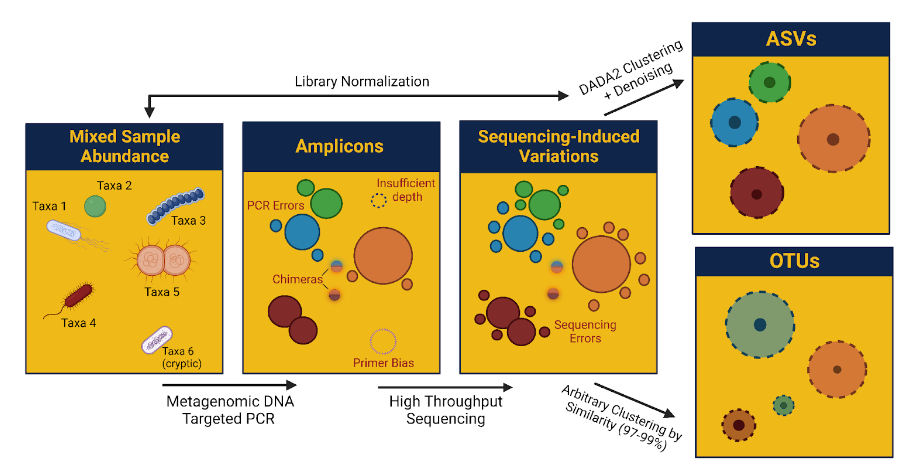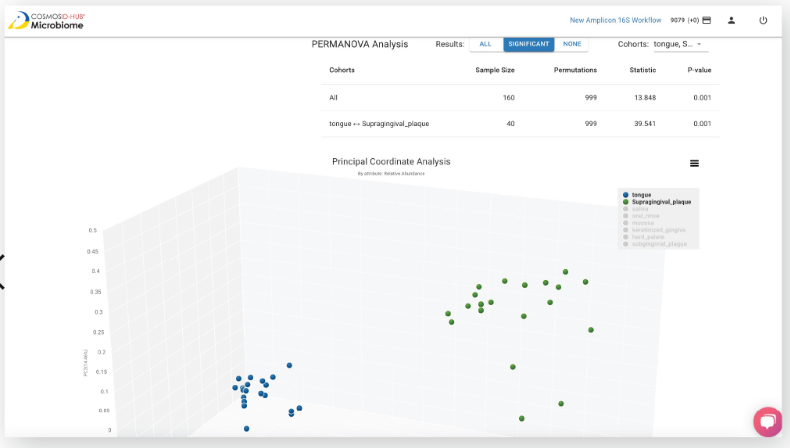The HUB offers both 16S and ITS amplicon short-read analysis via easy-to-use and automated workflows. Utilizing gold standard open-source algorithms and databases, simply upload your fastq’s, choose your variable regions or primer sequences and get results faster than you expect!
16S Amplicon Analysis
The HUB houses both ASV and OTU clustering methods for 16S analysis, as well as functional annotation via PICRUST2. Pipeline selection is based on batched-sample uploads and quality control metrics implemented through Nextflow ampliseq definitions.
- The first taxa method processes 16S sequences into amplicon sequence variants (ASVs). This involves trimming and merging sequencing reads and clustering them through the DADA2 framework. This model also applies learned error models based on batched-upload of sample cohorts to remove chimeras and ensure similar sequences are clustered together. These ASV clusters are then taxonomically annotated down to the species-level (where possible) using DADA2’s naive Bayesian classifier and the Silva version 138 database.
2. The second taxa method utilizes the more classical operational taxonomic unit (OTU) approach that is better suited for small-batch sequencing runs and lower quality data. The pipeline processes raw reads by read trimming to remove adapters and low quality bases. OTUs are picked and clustered based on 97% sequence similarity and identified against the Silva 16S database through the QIIME framework. This pipeline is selected if the quality of bases across the reads drops below phred score of 20, which can confound the DADA2 pipeline when clustering more-sensitive ASVs.
3. Functional potential is then predicted based on observed marker gene content and microbe abundance using PICRUST2 (Phylogenetic Investigation of Communities by Reconstruction of Unobserved States. These functions are annotated by EnzymeCommission or MetaCyc ontologies that can be aggregated to predict pathways that are likely present in a given sample.
4. The final results are then presented in tabular format with the taxonomic names, ASV/OTU ids, frequency, and relative abundance. Results can be downloaded, or compared to other 16S samples for visualizations through the CosmosID Metagenomics Cloud.

ITS Amplicon Analysis
For taxonomic profiling based on fungal amplicon data, the ITS pipeline starts by read-trimming and quality filtering of single- or paired-end fastqs. A closed-reference OTU picker clusters similar sequences with ≥97% similarity into operational taxonomic units (OTUs) that are identified against the UNITE Database. The final results are then presented in tabular format with the taxonomic names, OTU IDs, frequency, and relative abundance.










